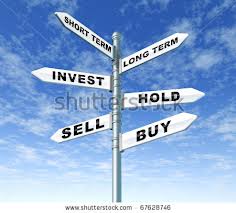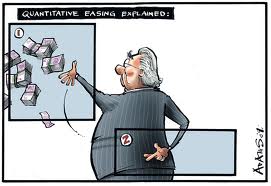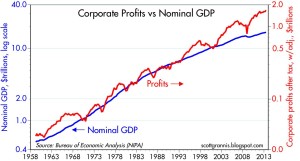
In a recent episode of 60 minutes, author Michael Lewis argued that the stock market is rigged. His argument was that High Frequency Traders (HFTs), who use computer algorithms and complex trading systems to buy and sell extremely high volumes of shares, are effectually robbing ordinary investors and anyone else who participates in the market.
What Is High Frequency Trading?
High Frequency Trading is:
A program trading platform that uses powerful computers to transact a large number of orders at very fast speeds. High-frequency trading uses complex algorithms to analyze multiple markets and execute orders based on market conditions. Typically, the traders with the fastest execution speeds will be more profitable than traders with slower execution speeds. As of 2009, it is estimated more than 50% of exchange volume comes from high-frequency trading orders.
High-frequency trading became most popular when exchanges began to offer incentives for companies to add liquidity to the market. For instance, the New York Stock Exchange has a group of liquidity providers called supplemental liquidityy providers (SLPs), which attempt to add competition and liquidity for existing quotes on the exchange. As an incentive to the firm, the NYSE pays a fee or rebate for providing said liquidity. As of 2009, the SLP rebate was $0.0015. Multiply that by millions of transactions per day and you can see where part of the profits for high frequency trading comes from.
The SLP was introduced following the collapse of Lehman Brothers in 2008, when liquidity was a major concern for investors.
How Can HFT Hurt Investors?
High Frequency Traders can hurt investors by, in effect, front-running buy and sell orders. When an order is taken, High Frequency Traders purchase the shares faster than you as the investor can, then sell them back at a small profit. Although the amount of profit made on each individual share may be minimal, when many shares are involved, these all add up to huge profits.
What To Do To Combat High Frequency Trading
First, to combat the effects of High Frequency Trading, become and remain a long-term investor. Day trading is a gamble not worth taking, and unless you are in on the high-frequency-trading-game, it is highly likely that you will lose at this pursuit. However, when you invest for the long-term, and have the patience and discipline to see your financial plan through to the end, you give yourself a great chance to be successful and make handsome profits.
Additionally, and on a more technical side, you can place limit orders on every share purchase. This is done by naming the top price you want to pay, per share, for a stock. This will allow the trader to not go above that price when making the purchase. For example, say a stock is trading somewhere in the neighborhood of $10.20/share. You can put a limit order of $10.25 on that stock, so that it will not be purchased above that price. As the stock price fluctuates throughout the day, it is likely that your order will be filled at the $10.25 price where your limit was set. This tactic will set your price, so that High Frequency Traders are not able to take advantage of you as the share price fluctuates throughout the day.
























